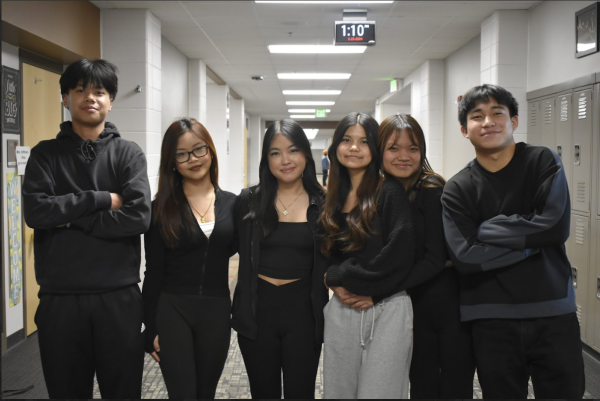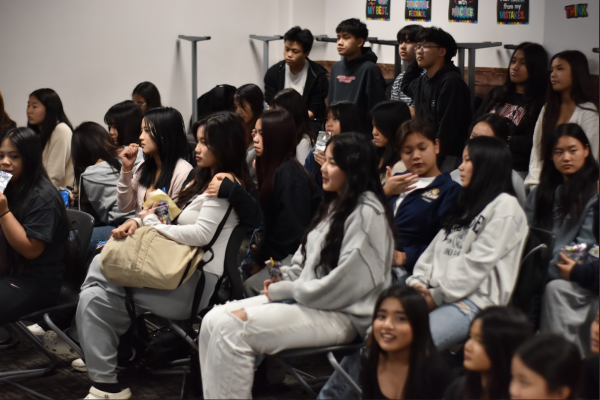
Assistant secretary freshman Jacob Hrin, secretary junior Rose Par, treasurer senior Junis Mawi, senior president Eli Ni Pa, assistant treasurer Sophomore Bawi Tha and director freshman Billy Thang poses for a group photo during their second club meeting on Feb.23.
photo contributed by Jacob Hrin
SHS serves as one of the most diverse high schools in Indiana. For 133 years, this school has stood to help its diverse array of students grow academically, intellectually and socially.
Through the diversity of the different races and ethnic groups that surround SHS, students have been able to form strong communities where they can foster powerful relationships to create a space in which students can feel a sense of belonging.
The Burmese community of SHS displayed their space through their newly created union, the Myanmar Student Association (MSA). This association aims to empower Burmese students in SHS.
“With this (association) we get to focus on one of the big nationalities (at SHS),” MSA president senior Eli Ni Pa said. “We can share culture (and) share some ways to help our country (and) students.”
Illustrating the rich cultural diversity at SHS, the formation of MSA serves as an important tool for Burmese students to grow, learn and overcome any challenges together in a community.
The creation of MSA is not the result of a fortuitous innovative idea. Rather, it is the result of two kindred experiences that SHS students hold close to their hearts.
These experiences include Ni Pa and Sophomore Bawi Tha seeing a new Burmese student roaming the halls of SHS looking lost and Ni Pa witnessing a new Burmese student eating lunch alone, excluded from the social activity around them.
Both of these experiences serve as examples of the disconnect new Burmese students experienced in the foreign halls of SHS, and these disheartening instances inspired Ni Pa and Lang to help their community in need by starting MSA.
“We would like to help our new students …,” club sponsor and math teacher Sui Tial said. “(We want to) support a small community inside the school.”
Taking both of these experiences into account, MSA sprouted to help these new students calibrate to the environment of SHS.
“New students would be able to focus and be familiar with more people,” freshman Jacob Hrin said.
The association hosted its first meeting on Feb. 21 in Tial’s room. Ni Pa didn’t expect attendance to be high for the first meeting, but she was proved wrong when large numbers of students showed up to support the creation of this new association, sending MSA into bloom.
The association has many things on its agenda, one of the primary goals being to support the ongoing conflict in Myanmar.

Although this association sits on American soil, its ability to help the victims of the conflict is not limited. During meetings, the association has held moments of silence for the victims involved in one of the recent incidents of the conflict.
The club’s agenda also aims to educate students in the association about the different cultures in Myanmar.
“It’s important for us as a school community to understand where everyone is coming (from),” Principal Amy Boone said. “Everyone has a different story and background, and there’s power in us sharing that.”
Within the Burmese community, there are many different dialects of languages, clothes, food and culture. However, many young adults in the community are unfamiliar with their culture due to their early arrival to the United States. To help their members learn and understand their culture better, MSA has activities such as concerts, performances, food festivals and dance lessons planned for the future, which will also raise funds for Myanmar.
At last, the repercussions of MSA leave some feeling more comfortable as they have already seen the anticipated change afoot.
Other communities at SHS such as Black Student Union (BSU) were also created to help students. With the wide range of diversity at SHS, new communities can be formed to help students find a place so they too can feel a sense of belonging like students in MSA and BSU.
“We gather together as a group presenting a Myanmar student,” Tial said. “That (shows) our culture, unity and making a better community in school and outside of the school.”
To read a story about how SHS students established the school’s first ever Black Student Union, click here.


